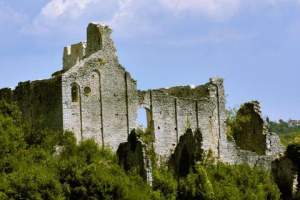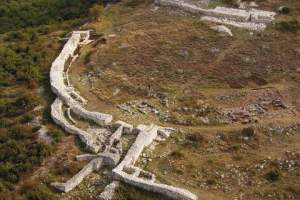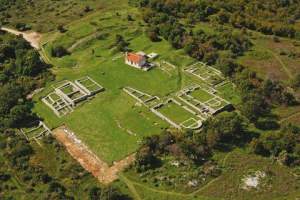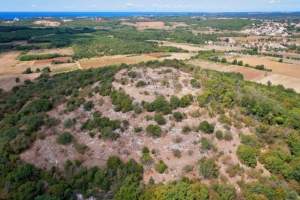Gradina on Brijuni Islands
Gradina is the Bronze Age settlement consisting of the central plateau encircled by three walls. Entrances were set up in the labyrinth form so as make the entrance into the settlement more difficult.
The Brijuni Islands, located in the south of the western Istrian coast, has a total of 14 islands and islets, making it the best indented and largest group of islands on the Istrian area. Together with the surrounding sea and underwater life, Brijuni was declared the national park in 1983 in light of its exceptional value. The largest of the islands is Veliki Brijun. Its coast as well as those of other islands are mainly short and rocky, although easily reachable. Geologically and geomorphologically, Brijuni represent an extension of west Istria. It is not surprising that 10000 years ago they were an integral part of the Istrian land.
There are numerous dinosaur footprints on Brijuni proving their existence on the island some 160 million years ago. They can be seen on four sites on Veli Brijun. The Brijuni dinosaurs come from the Cretaceous period, the last period before their extinction. More than 200 footprints of amazing reptiles can be seen in the Cretaceous park. Although the remains were discovered back in 1925, detailed explorations were carried out as late as the 1990s, when they were found to belong to Theropoids, a bipod carnivore, and aggressive and fast carnivore from the Coelurosaria group.
Animal kingdom on the islands has been enriched by numerous imported species. Apart from the native species such as the rabbits or various birds, one can seen exotic and less exotic animals which have become accustomed to the climate including deer, llama, zebra or an elephant. Apart from fauna, the flora also plays an important role. Mediterranean climate with lots of sunshine and warmth and sufficient air humidity facilitated dense vegetation of native plants such as holm oak, strawberry tree and myrrh. They are supplemented by various types of pines, sequoia, eucaliptus and fir trees, not characteristic for the Brijuni islands. The most famous among the Brijuni flora is the Old Olive, one of the oldest on the Mediterranean. It still produces olives for making the olive oil even after 1600 years of its life.
















